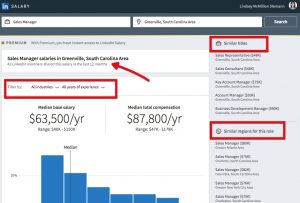Companies are failing at one of the most-used forms of customer service, emails, and it is sending their customers away. For retailers, this failure may signal a problem more serious than lost sales.
Dear Acme Whiz-Bang Co.,
I write to inform you that the coffee maker you sent me not only is the wrong model, but it arrived broken. Can you please send me the coffee maker I ordered and provide guidelines on how I can return this broken one without cost?
Sincerely,
Charlie Smith
Bad news, Charlie. You’ve got a one-in-three chance of never hearing back from Whiz-Bang. If you merely want acknowledgment that your email was received, your odds are even worse.

Photo credit: Walmart
Companies are failing at one of the most-used forms of service, emails, and it is sending their customers away. One in three organizations do not respond to customer service emails, according the 2016 Customer Service Benchmark report, which assessed 250 companies globally.
For shoppers, who can easily read reviews before hitting the “buy” button on most anything, this failure can be the key factor in deciding whether to make a purchase, and it can cost companies millions. However, for retailers it may signal a problem far more serious than lost sales.
Following are the key findings of the report by SuperOffice, a customer relationship management firm.
• About one-third (32 percent) of companies surveyed do not respond to customer service emails.
• Two-thirds of companies (66 percent) do not acknowledge when an email is received.
• Just 8 percent of companies follow up with customers to learn if they are satisfied with the response.
• Almost four in five companies (78 percent) are unable to answer questions on the first try.
• The average response time to a customer service request is nearly 17.5 hours.
“The research shows a majority are failing to meet customer expectations and costing millions of dollars in lost customers and unnecessary internal follow-up work,” the study states.
You’ve Got A Serious Problem
For retailers, the findings point to a weak link that should be one of their strongest assets: the potentially giant role of relatively inexpensive email as a form of engagement.
Based on the report’s findings, the causes for this communication breakdown signal a more urgent issue than a failure to communicate – they indicate that organizations are not factoring customer experience into the business model. Some companies lack the very tools necessary to effectively and quickly respond to customers.
Sure, these processes require an investment, but not having them can be more costly. Research from Salesforce.com, for example, shows that companies that use customer relationship management services can increase sales by 29 percent.
Sorry, Charlie
To understand why this is happening, let’s pick up with Charlie.
Though it was not his preference, Charlie sent his complaint to Acme Whiz-Bang through an online form because that was the only method of contact offered. When the company did not send an automated response, he sensed his message had disappeared into a cyber black hole.
The next day, having not heard back from the company, Charlie sent another web query.
Charlie’s inability to find an online email address is not uncommon. Many retailers, including Walmart and Zappos.com, direct customers who click the “email us” button to online forms, which can be cumbersome. It took me several clicks on Walmart.com to get to a product-return form. Once submitted, Walmart.com provided a reference number and a promise that a representative would be in touch within 24 hours. That email reply followed within a few hours.
Zappos.com’s form took fewer clicks to locate and was shorter. The company also posted an immediate response and reference number and followed up by email in less than 30 minutes.
Smaller merchants can make several excuses for why they fail to adequately respond to customer email queries, but among the companies reviewed in the Benchmark report, there existed one common denominator: They simply lack the processes to identify and respond to emails.
This is troubling because it points to systemic issues. True, software can perform near miracles, but if a company reaches midsize and still lacks such elemental tools, I have a hunch it is suffering foundational weaknesses that cannot be fixed with software.
Rebuilding Relations
When Acme Whiz-Bang finally followed up with Charlie by email several days later, he was no longer a loyal customer. He asked for a refund of the coffee pot but did not want another. Instead, he wiped Whiz-Bang from his list of bookmarked websites and clicked onto Amazon.
There are tactical steps the company could have taken early on to prevent this customer loss. If Whiz-Bang had at the least invested in automated-response software, the complaint would have been assigned a tracking number, similar to those assigned by Walmart or Zappos, which could be stored for future customer support.
He also might have received an email response, such as those I received from Danika at Zappos and Mary at Walmart, each of whom provided detailed steps on how to make a return (per my query). Walmart sent a second “how we doing?” email the next day requesting I take an online survey.
Those, however, are not the make-or-break elements here. The broader issue to me, as an executive who works with many retailers, is that customer experience is still not being included among the pillars that should support a company.
Three Steps To A Better Experience
Look, I get it. Growing companies regularly move their bags from horse to horse while midstream. Unforeseen events train them to focus on tackling the challenges immediately before them: merchandising, distribution, pricing, promotion, real estate, marketing, etc.
Responding to complaints feels very small compared with these bigger issues, but it is a cornerstone that, if pulled out, can cause deep cracks in the business structure. Here are four simple tips for folding customer experience into the mix early on:
Encourage enrollment: One of the easiest ways to identify a customer and anticipate her needs is to offer a beneficial membership program. It can be a loyalty program or an ambassador club – either way, it will provide the company with an identification code and email through which it can better manage the relationship. These kinds of programs also are pro-active tools that can help when a retailer has to manage product recalls or food-related issues (if a grocery store).
Mingle: I’ve heard the CEO of one of the nation’s largest grocery stores regularly shops locations, unidentified, to gauge the customer experience. The same can be done by email. Secret shoppers are old-school, but they are a reliable way to monitor the customer experience. Established early on, the practice provides a baseline against which to measure.
Commit to your channels of service: If a company cannot turn around an email in a timely manner, then it should consider other ways to engage the customer – online chats, call centers, whatever can be supported to deliver a satisfactory experience. I actually think email can be messy, given that the back-and-forth process can drag on without reaching a joint understanding of the underlying challenge or the needed directions.
These steps are not a panacea, but they can improve a growing company’s chance of survival – possibly above one-in-three.
This article originally appeared on Forbes.com, where Bryan serves as a retail contributor. You can view the original story here.
Digital & Social Articles on Business 2 Community(78)
Report Post






